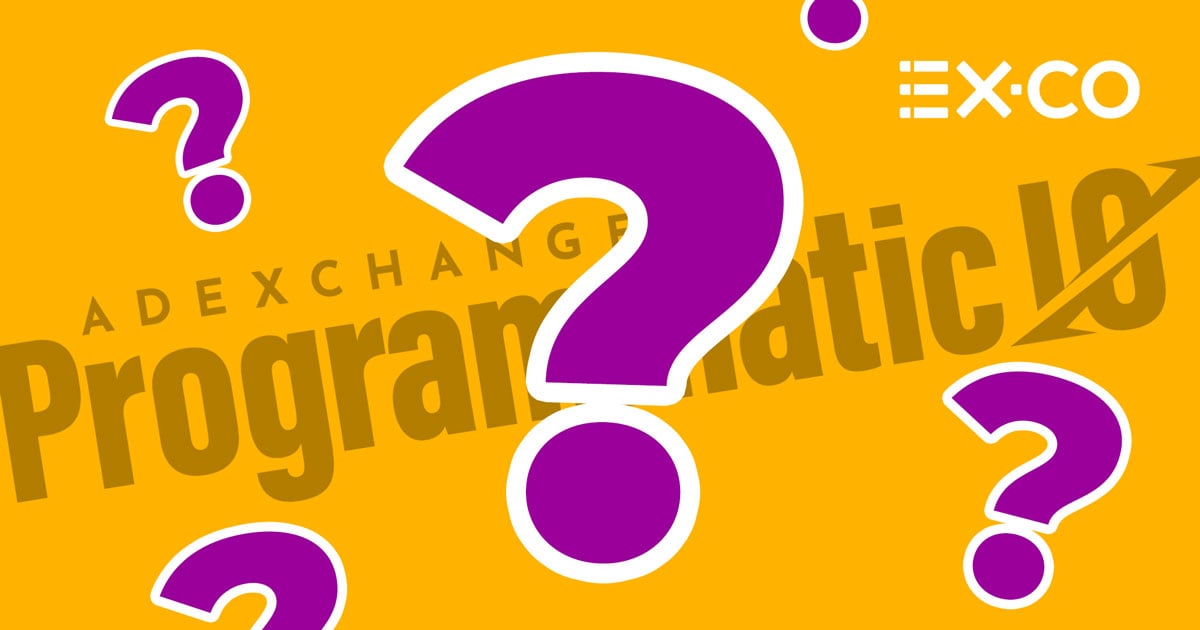With over 1,200 people in attendance, AdExchanger’s Programmatic I/O is undoubtedly one of the most anticipated events in the advertising industry, providing a platform for experts to discuss the latest trends, challenges, and opportunities in programmatic advertising. However, even after the event concluded, many questions continued to linger in the minds of industry professionals. In this blog post, we’ll explore some of the pressing questions that the industry is still grappling with.
1. Will we be talking about made for advertising (MFA) sites next year?
Made for advertising sites have been a hot topic recently due to transparency issues. The precise definition of an MFA site still needs to be clarified and who will have the authority to determine whether or not the traffic is genuine? Media buyers want more transparency but MFA sites aren’t necessarily fraudulent and have the right to exist (as long as they follow laws and industry regulations), and do offer value: affordable, viewable impressions. Are these concerns here to stay? Will DSPs avoid MFA sites altogether? Or will new technologies be developed to improve transparency?
2. Are people tired of talking about third-party cookies?
Let’s face it, the demise of third-party cookies has been delayed for so incredibly long that we’ve literally been talking about the topic for what seems like forever. How to prepare for the death of the cookie, what alternatives exist, etc. Are we growing weary of this conversation now, or is it a topic that still remains relevant as we (finally) approach the cookie’s end? And are the proposed solutions that have emerged just more cookies, or are there innovative identity and addressability alternatives still on the horizon that can pass data through the bid stream in a privacy-compliant way while also allowing brands to scale?
3. What are the side effects of supply path optimization (SPO)?
SPO was definitely one of the most popular topics throughout the event. Direct buying has been a game changer for many companies looking to streamline their relationships and cut costs but it’s not without its complexities, particularly as the direct integration requirements with top SSPs are plentiful. Sure, there are technical efficiencies when buying direct such as less latency, quicker bids, etc. but what are the unintended consequences of SPO, and how can advertisers and publishers navigate them effectively? A few things are needed: supply plumbing, DSP transparency, and a stronger collaboration between SSPs and DSPs.
4. What’s in a successful publisher’s playbook?
One of the more insightful sessions at Programmatic I/O was called “The New Publisher Playbook" during which AdMonsters’ Lynne d Johnson interviewed Time’s COO, Mark Howard, and Zack Sullivan, CRO of Future. During the session, we learned that data–in all its shapes, sizes, and forms–is extremely important, particularly to publishers that are driving commerce. Having a data and analytics loop that allows a publisher to understand audiences, their behaviors, and their experiences, can help inform the UX and editorial experiences the publisher is creating which, in turn, will help propel their business forward. Of course, many publishers are also investing in ID solutions, contextual, video, and building an infrastructure so brands will dedicate more ad dollars.
5. Should brands steer clear of buying media on news sites?
In a world of misinformation and polarized news, brands have become fearful of their programmatic advertising appearing adjacent to news content. However, as we enter an election cycle where news content consumption will invariably increase, advertisers need to rethink their brand-safe strategies. According to Josef Najm, director of programmatic & partnerships at Reuters, publishers need transparency into keyword lists. With more insights into how brands are applying their safety measures, publishers can mitigate the risks, audit keyword blocking lists, and be more strategic. All that said, we wonder if advertisers are ready and willing to share these insights before choosing their media placements. If not, advertisers are missing out on a big opportunity.
6. How can we mitigate the copyright challenges of AI?
As AI use becomes more prevalent in content creation, copyright issues are becoming increasingly complex and the industry is challenged to decipher it all. What steps can we take as an industry to address copyright concerns? (Shameless plug: Our co-founder and CEO, Tom Pachys, recently published an article about this very topic on Fast Company. Check it out here).
Want to talk more about any of the above? Drop your details below.
